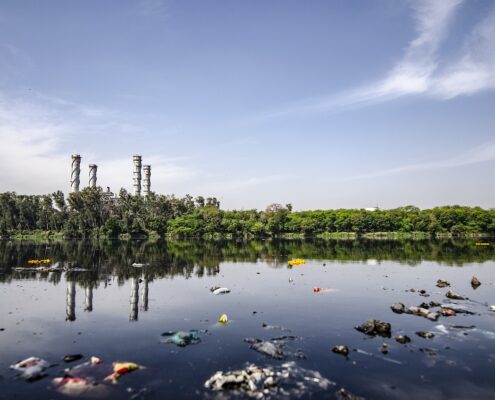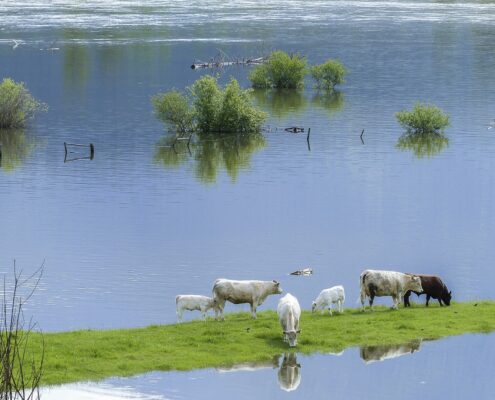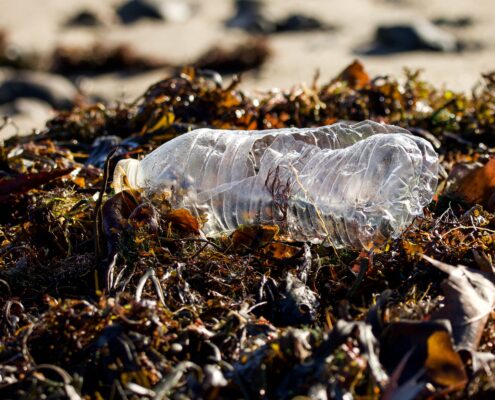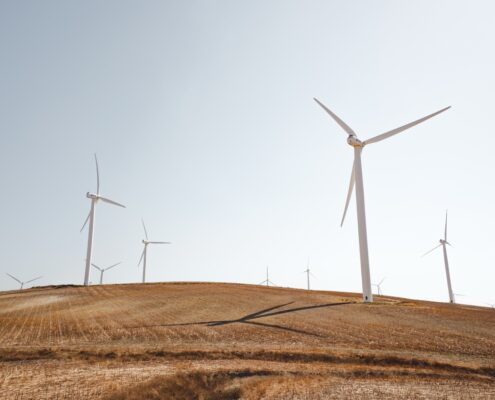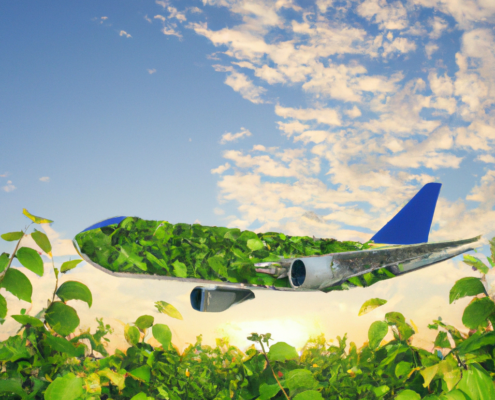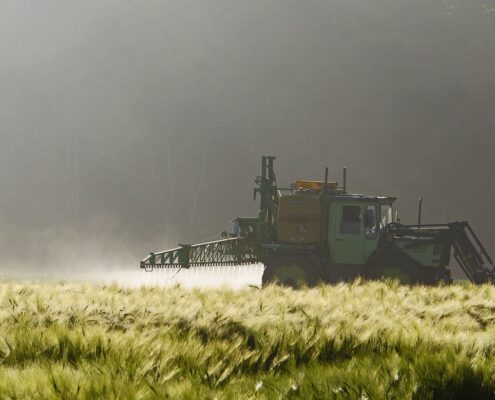 https://greenmarked.it/wp-content/uploads/2024/06/agriculture-2361978_1280.jpg
779
1280
Etienne Hoekstra
https://greenmarked.it/wp-content/uploads/2022/01/LOGO-GREENMARKED-SITO-600x600.png
Etienne Hoekstra2024-06-28 18:34:132024-06-29 10:24:20Balancing Agriculture and Sustainability in the EU
https://greenmarked.it/wp-content/uploads/2024/06/agriculture-2361978_1280.jpg
779
1280
Etienne Hoekstra
https://greenmarked.it/wp-content/uploads/2022/01/LOGO-GREENMARKED-SITO-600x600.png
Etienne Hoekstra2024-06-28 18:34:132024-06-29 10:24:20Balancing Agriculture and Sustainability in the EUJune 04, 2024

Plastic production has sharply increased over the last 70 years: while in 1950, the world produced just two million tonnes, plastic is nowadays topping over 450 million tonnes [1]. Life without plastics would be difficult since it adds much value to our life: it’s a cheap, versatile, and sterile material used in various applications, including construction, home appliances, medical instruments, and food packaging. While the material has been around since 1907, mass production began right after the Second World War and since then, plastics production has increased nearly 200-fold since today as we produce as much plastics globally as two-thirds of humanity’s total mass. This produces 400 million tonnes of plastic water each year [2].
However, when plastic waste is mismanaged – not recycled, incinerated, or kept in sealed landfills – it becomes an environmental pollutant. It is estimated that eight million tons of plastic waste and pollution enters the world’s oceans every year [3]. One to two million tonnes of plastic enter our oceans yearly, affecting wildlife and ecosystems.
A 2020 report found that should no action be taken, plastic pollution is set to grow to 29 million metric tons per year in less than 20 years from now [4]. This has a detrimental impact on marine wildlife and the health of ecosystems – animals can ingest plastic, get entangled in them, and plastic debris increases the risk of invasive species, to just list a few. Many marine animals accidentally ingest plastic waste or microplastics, in which larger plastic debris breaks down into smaller plastic particles that are invisible to the human eye. As plastic travels up the food chain and it reaches the top predator it is inevitable that top predators will end up consuming plastic.
It is estimated that humans ingest about five grams of plastic every week – a spoonful that weighs about as much as a bottle cap and equivalent to about half a rice bowl [5]. Combined throughout a year, the amount of plastic we ingest amounts to a full dinner plate. In 10 year’s time, we would have eaten five pounds of plastic and 44 pounds worth of plastics over the course of a lifetime.
But scientists in the same report say it is possible to slash 80% of that pollution: by reducing the growth of virgin plastic production, improving waste collection systems, and investing in recyclable plastics. These measures could be addressed with a wider angle, like it is conceived by EU Directive, 2019/904, the so-called “Single-Use Plastics Directive” (SUPD), which bans several single-use plastic products and addresses additional items with measures such as extended producer responsibility and obligatory requirements for product redesign. Thanks to it, the use of certain disposable plastic products such as drinking straws, stirrers or EPS containers for take-away meals has since been banned.
However, there is an EU-wide plastic levy – or plastic tax – to reduce plastic consumption. But this implementation is also designed differently in different countries: for example, this directive has been implemented in Germany, Austria, Belgium, Portugal and Croatia while France and Spain have even stricter environmental laws that affect online trade. Among the European countries, Italy is postponing the introduction of the plastic tax to 2024 (after the original implementation was planned for 2020!) with the aim – analogous to the European directive – to achieve a reduction in the production and consumption of single-use plastic products (MACSI) and to support the sustainability of the circular economy.
Examples of MACSI are plastic bottles, bags and trays for food (e.g. yoghurt pots). Tetrapak containers used for liquid food products, such as milk and soft drinks. Containers for detergents, earphones, sweaters and any other good wrappers, but also the polystyrene used to protect the packaged appliances, the bubble wrap that wraps any online purchased item, the plastic films used to wrap the materials on the pallets and the caps of bottles or jams. The subjects obliged to pay the Plastic Tax are different: for MACSI manufactured in Italy, the manufacturer or the customer, which is the subject who requests the manufacture of MACSI for his work; for MACSI from other European Union countries, the subject who buys MACSI in the case of B2B sales, or the transferor in the case of B2C sales to private consumers in Italy; for MACSI coming from third countries, on the other hand, the importer.
The Plastic Tax has an impact on the entire corporate Value Chain. All operators in the supply chain will have to quantify the impacts of the new tax on their business and adapt the processes and the information systems to the compliance obligations that may arise for the obliged subjects. This is going to be an expensive process but it is going to make us all think about how the issue of plastics needs to be addressed in the fastest and best way possible to maintain biodiversity and sustainable development. As with all the other taxes and regulations aimed at dealing with environmental issues (e.g., carbon tax), the process will be delicate and controversial, but action is needed as soon as possible.
References:
Click here to expand the references[1] Hannah Ritchie, Veronika Samborska and Max Roser (2023) – “Plastic Pollution” Published online at OurWorldInData.org. Retrieved from: https://ourworldindata.org/plastic-pollution [Online Resource]
[2] Olivia Lai (2024)- “8 shocking plastic pollution statistics to know about” Published online at Earth.org. Retrieved from: https://earth.org/plastic-pollution-statistics/ [Online Resource]
[3] Tim Kiessling, Mandy Hinzmann, Linda Mederake, Sinja Dittmann, Dennis Brennecke, Marianne Böhm-Beck, Katrin Knickmeier, Martin Thiel (2023)- “What potential does the EU Single-Use Plastics Directive have for reducing plastic pollution at coastlines and riversides? An evaluation based on citizen science data”. Waste Management, 164: 106-118.
[4] Leslie Kaufman (2020)- “Ocean plastic pollution is on track to triple by 2040” Published online at Blomberg.com. Retrieved from: https://origin.www.bloomberg.com/news/articles/2020-07-23/plastic-pollution-in-oceans-to-triple-by-2040-harming-climate?embedded-checkout=true [Online Resource]
[5] Lina Zeldovich (2020)- “We consume a spoonful of plastic a week” Published online at Jstor.org. Retrieved from: https://daily.jstor.org/we-consume-a-spoonful-of-plastic-a-week/ [Online Resource]


